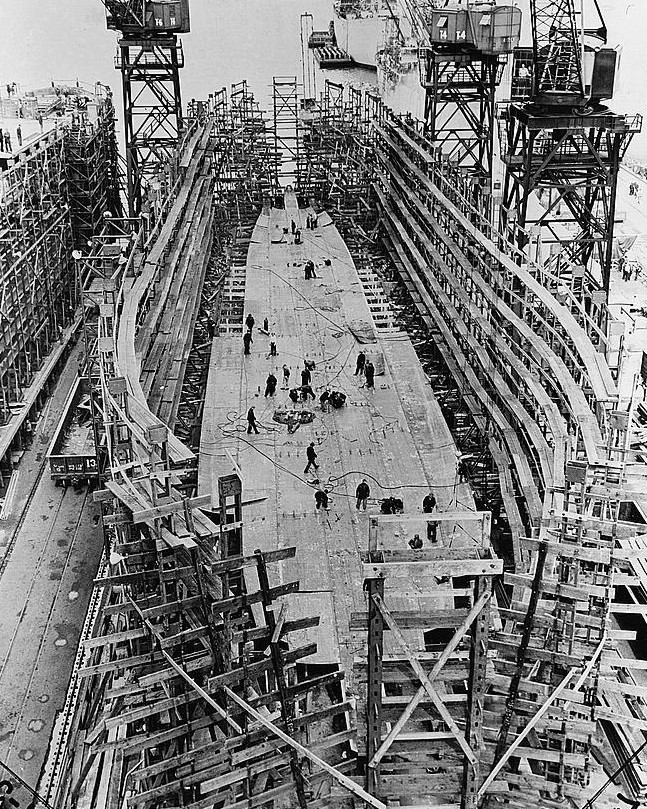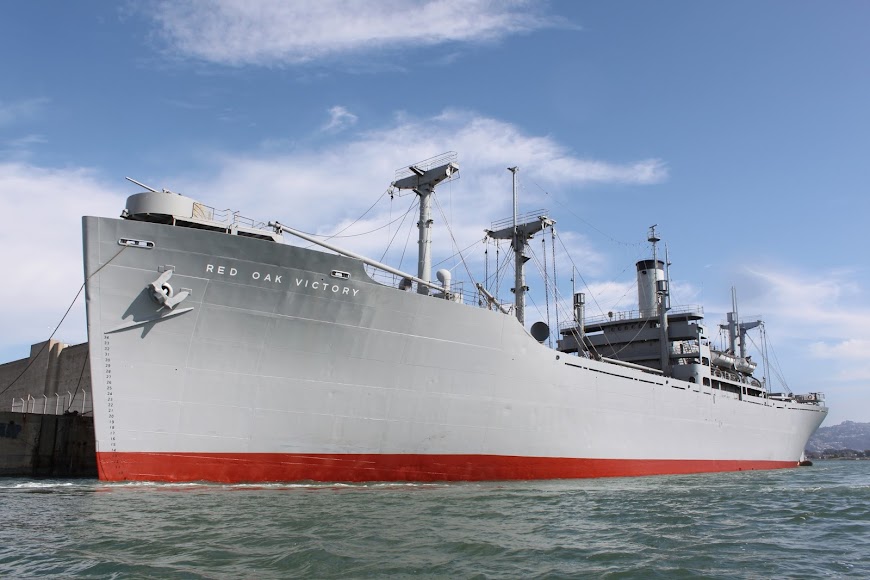

Videos 4


Liberty ship under construction during World War II.
WWII-Era Ships
Naval warfare changed dramatically during the war, with the ascent of the aircraft carrier, and the impact of increasingly capable submarines. Destroyers saw dramatic improvements, as the Fubuki-class destroyer set a new standard not only for Japanese vessels, but for navies around the world, and are considered to be the world's first modern destroyer. Submarines were critical in the Pacific and Atlantic theatres. Advances in submarine technology included the snorkel, though advanced German submarine types came into service too late to impact the war effort. The German Kriegsmarine also introduced the pocket battleship, to get around constraints imposed by the Treaty of Versailes.
Naval innovations included the use of diesel engines, and welded rather than riveted hulls. But the most important naval advances were in the field of anti-submarine warfare. Driven by the desperate necessity of keeping Britain and Japan supplied by sea, technologies for the detection and destruction of submarines were a high priority. While Japanese efforts proved futile, the Allied use of sonar became widespread as did the installation of shipboard and airborne radar. The construction and launch of new ships during the war was limited due to protracted development and production timelines, but important developments were often retrofitted to older vessels

Naval Legends: SS Red Oak Victory
[12:04]
SS Red Oak Victory and her sisters were designed to replace US Merchant Marine losses to enemy submarines, outrun the subs, and get vital supplies to soldiers at the frontlines all around the world. The Victory design was an improvement on the Liberty ships, faster, stronger and bigger. This design served as the basis for the Haskell-class transports, the most numerous of the APAs built during the war.
Today, SS Red Oak Victory is only one of two surviving Victory-class ships. She has been preserved to serve as a museum ship in Richmond, California, and is part of the Rosie the Riveter/World War II Home Front National Historical Park.

How America Grew the Most Powerful Navy In the World
[43:35]
From the Timeline series on War Factories, this is a fascinating video presentation on the untold story of war production. The title says it all: How America Grew the Most Powerful Navy in the World (during WWII).
The story follows the development of the Liberty ships and how Henry J. Kaiser transformed ship building, using assembly line techniques, to massively increase war production. Liberty Ships were produced in such incredible numbers that they became known as the "Model T Fords" of the ocean.
Only three Liberty ships have survived to this day. A video tour of the SS John W Brown, one of those remaining ships, blends in nicely with the historical footage. It is a fascinating documentary.

